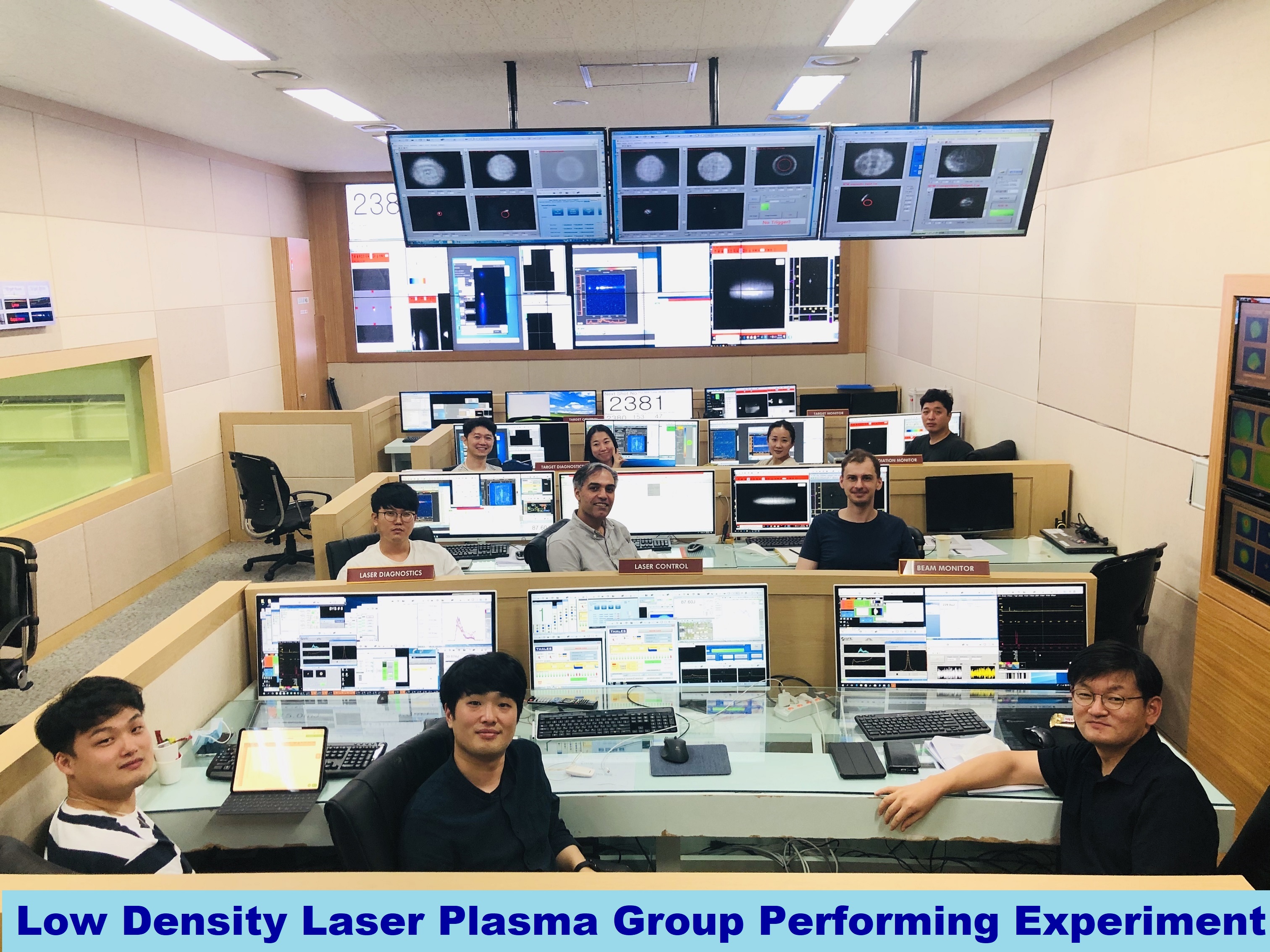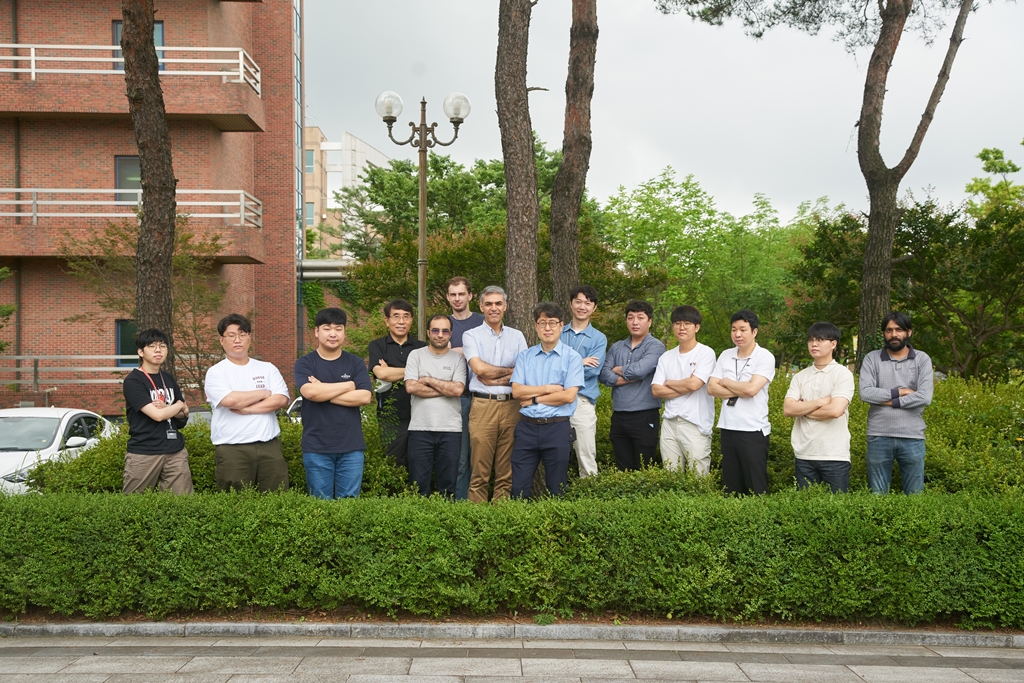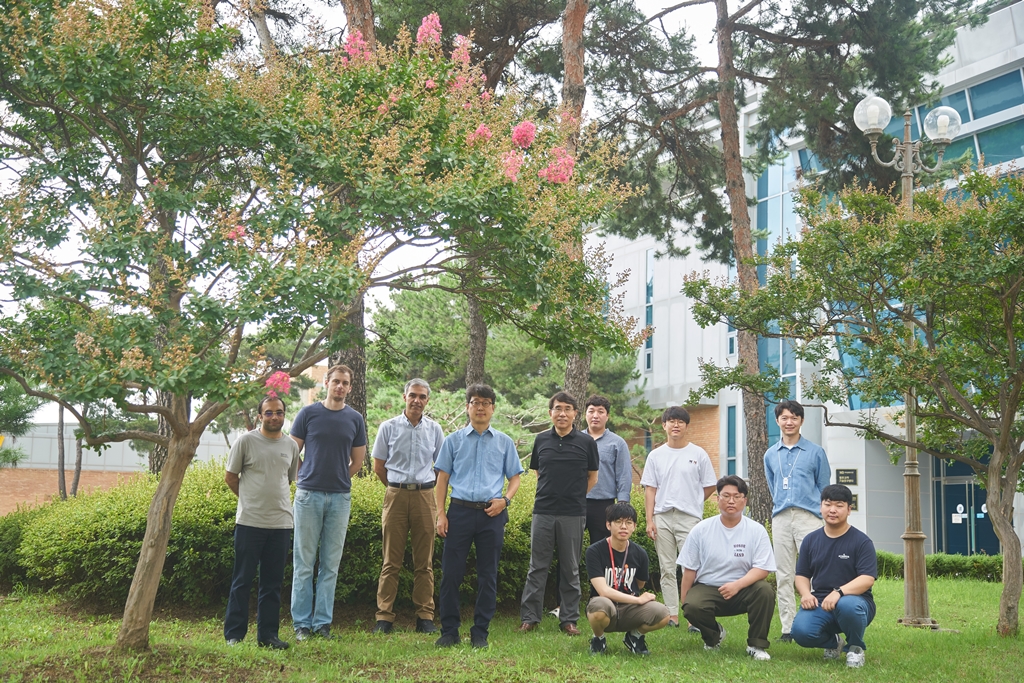Center for Relativistic Laser ScienceExplore the interaction between ultra-intense light and matter
mainmenu
▪ Research objective
State-of-the art petawatt (PW) lasers have become a tool to study fundamentals of plasma physics, plasma-based acceleration and high energy density physics (Figure. 1). In near future, it can help us understand even the structure of particles and vacuum at a fundamental level. In current experiments, by sending an ultrashort (20 femtosecond) PW laser pulse through a low density gas, it is possible to generate electron beams with multi-GeV energy. Such high energy beams are only obtained in large-scale accelerator facilities, but using PW laser pulses, they can be generated just in a few centimeters. Taking advantage of such tools, the Low Density Laser-Plasma Group performs its research in three broad directions, both theoretical and experimental. Our first purpose is to accelerate electron beams up to the highest energy achieved in the field (1 GeV – 10 GeV) under various conditions and targets. Secondly, using the available electron beams we aim to produce femtosecond pulses of X-ray and gamma-rays and to investigate their properties and applicability. Thirdly, building upon the developments of the first two directions, we aim to study strong field quantum electrodynamics, in particular through laser-electron collisions, i.e. nonlinear Compton scattering.
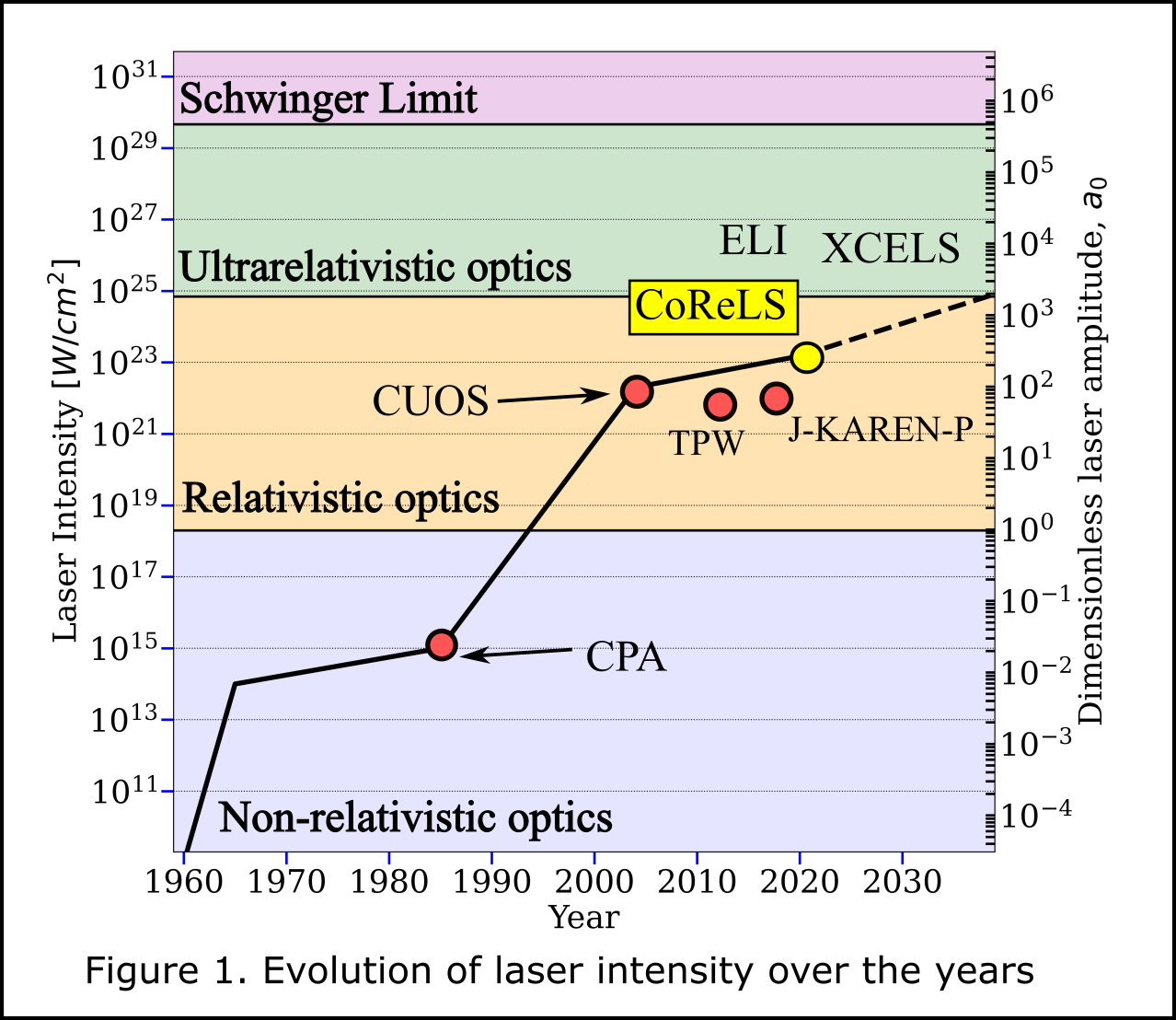
▪ Research topics
· High energy LWFA (1 GeV – 10 GeV)
· Novel targets and injection schemes for LWFA
· Characterization and application of high energy radiation (betatron and bremsstrahlung)
· Strong Field QED: Nonlinear Compton scattering
· Radiation Reaction and Breit-Wheeler pair production
· Positron production
· Detector development
▪ High energy LWFA
We currently produce up to 4 GeV electron beams using a mechanism known as Laser Wakefield Acceleration (LWFA). In such a setup, a laser pulse propagates in plasma and produces a structure that moves behind it at speed of light. Inside the structure, a charged cavity is formed, containing electric field strengths 1000 times higher than in RF-based accelerators. Electrons are trapped in this cavity and accelerated by the field, resulting in high charge ultrashort (femtosecond) beams. Our group develops novel targets and structures that aid to control the acceleration process in the high energy regime (1GeV-10GeV). The high energy acceleration is performed using the main 4 PW beamline, but we also study the acceleration of electrons and test various gas targets using an auxiliary 150 TW beamline.
▪ Strong-Field QED and Radiation Reaction
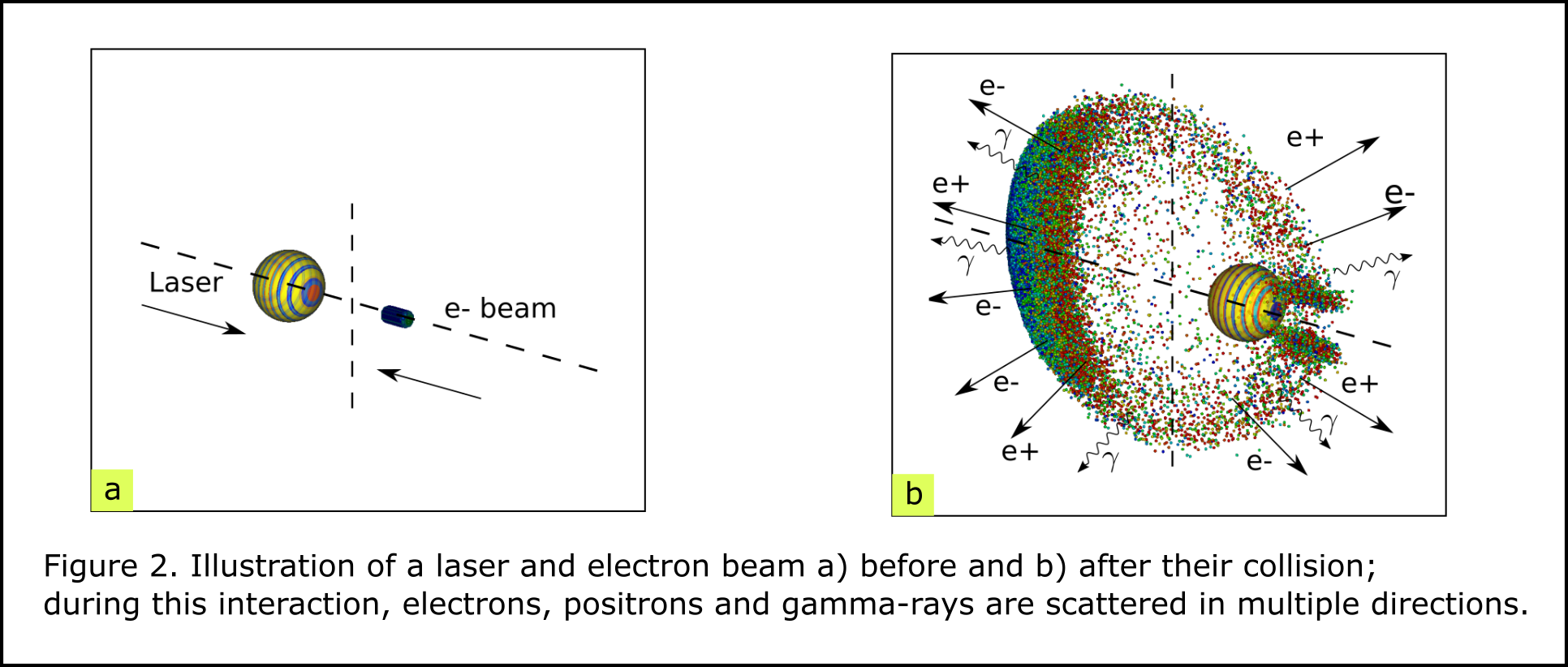
Using quasi-stable GeV electron beams, we explore an emerging topic of research in high energy physics and high intensity laser physics: Strong-Field QED (SFQED). This area of study seeks to understand the fundamental theory of particles (Quantum Electrodynamics) under conditions of extreme electric field strength (up to the Schwinger limit, of 1.3x1018 V/m). On the long term it can lead us to decipher the structure of vacuum and of astrophysical objects (neutron stars, magnetars, etc.). The study of SFQED can be performed through Nonlinear Compton Scattering. In this configuration, an ultrarelativistic (>1 GeV) electron beam is collided with a high intensity laser pulse (>1022 W/cm2), producing ultra-bright gamma rays and in the process decelerating part of the electron beam, through the mechanism of Radiation Reaction. The study of such collisions will also allow us to generate e-e+ pairs through the Nonlinear Breit-Wheeler process and to investigate the properties of these particles (Figure 2).
▪ Characterization and application of high energy radiation (betatron and bremsstrahlung)
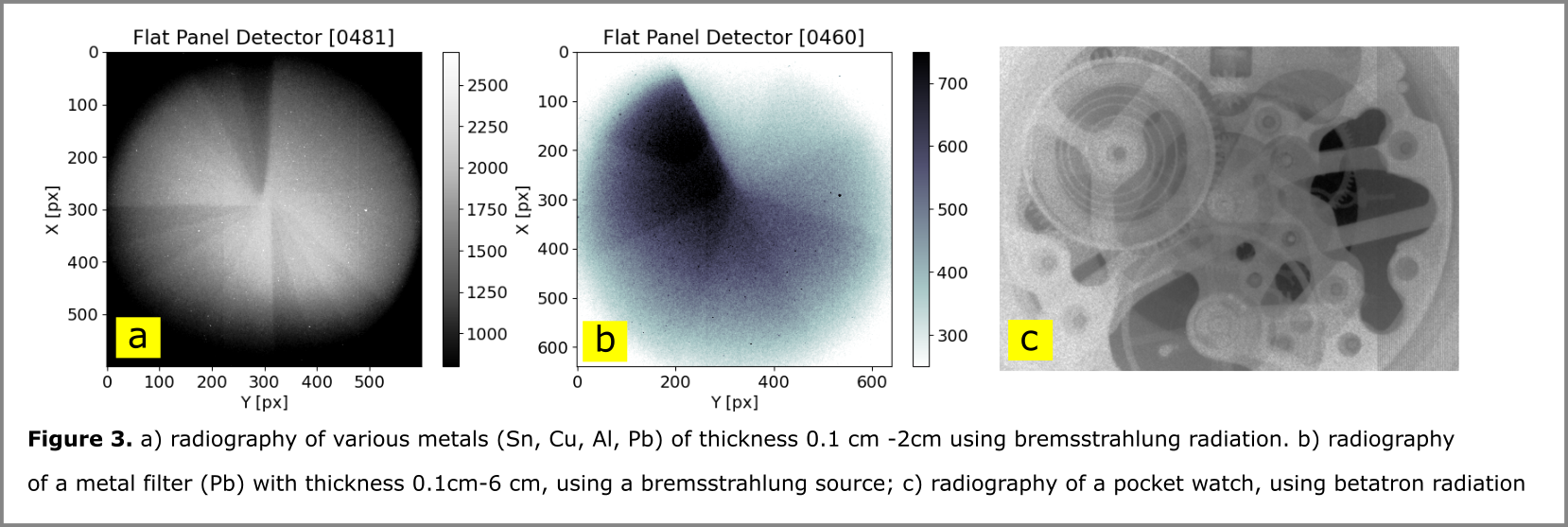
Generation of radiation in the form of hard x-rays and gamma-rays is a by-product of GeV electron beams. When electrons oscillate during LWFA, they produce up to MeV –level photons, a scheme also known as betatron radiation. These sources can be used for imaging of biological samples and due to the small source size, can be excellent for detecting fine structures. Besides betatron radiation, Bremsstrahlung sources of 10-100s MeV photons can be produced when the e- beam interacts with a solid target. Due to the high energy of photons involved, this can be an excellent tool for nondestructive imaging of dense materials (Figure 3.).
▪ Staff
